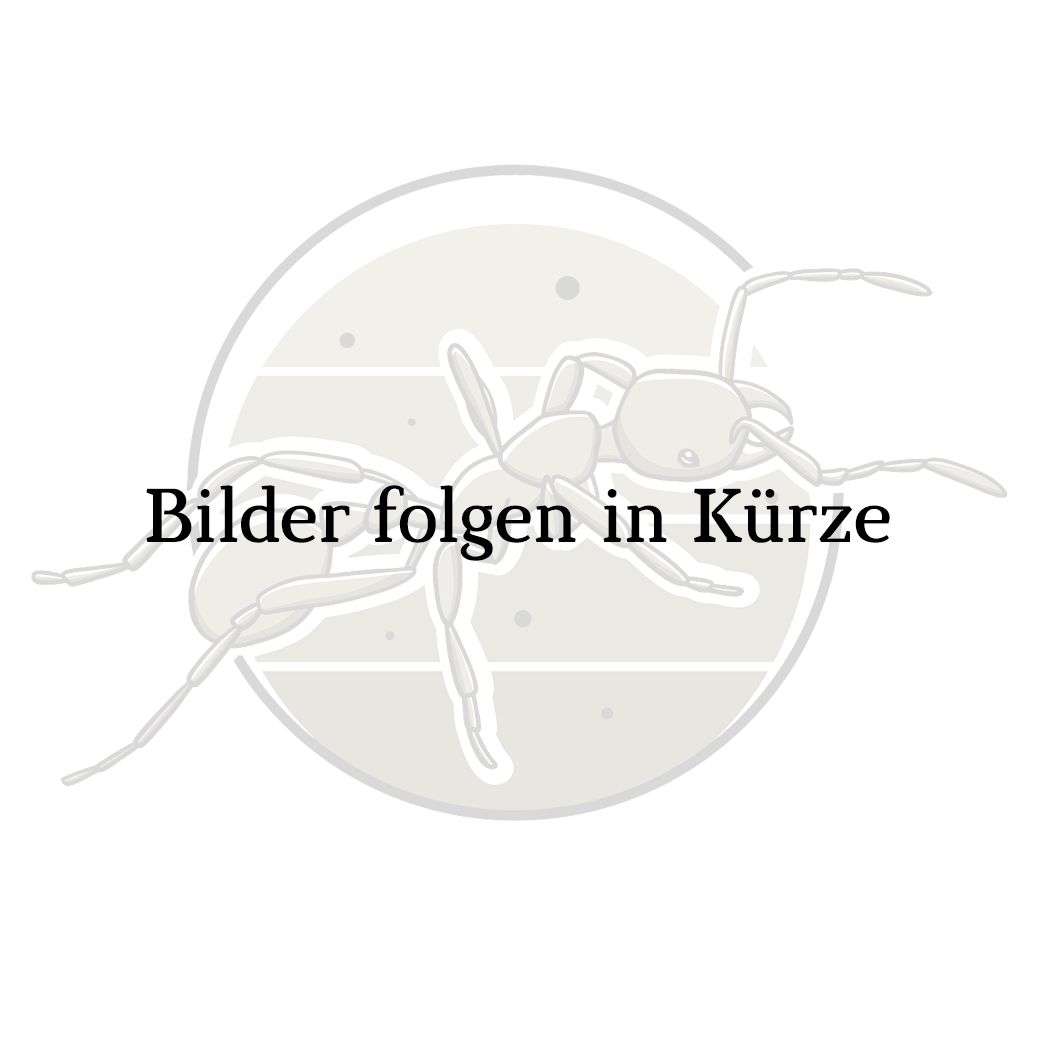Lasius niger
Lasius niger is a highly adaptable ant species found throughout Eurasia and is often recommended as a classic beginner species. Indeed, it is extremely tolerant of fluctuating keeping conditions and quickly develops large colonies, which makes it attractive for first experiences in ant keeping. However, its small body size, fast movements, and rapid colony growth also require attention. For those who are looking for a robust and active colony and have no problem with tiny, fast ants and the need for escape-proof setups, Lasius niger offers an engaging entry into the hobby.
Species Profile
- Scientific name: Lasius niger
- Subfamily: Formicinae
- Difficulty: ★☆☆☆☆ (Easy- ideal for beginners and forgiving of many early mistakes)
- Colony size: up to 50.000 workers
- Queen number: Monogynous
- Queen size: apx. 8-9 mm
- Worker size: apx. 3-5 mm
- Soldiers: No
Keeping Parameters
- Temperature: 18-28 °C (most active from ~22 °C, but tolerant of lower temperatures; no strict preferences)
- Nest humidity: 50-70 % (moderately moist, very tolerant)
- Outworld humidity: no special requirements
- Hibernation:
Yes | 5–10 °C from late October to late March (can also be shortened to 3-4 months)
- Light sensitivity: prefers dark nests, but can adapt to light if kept bright from the start
- Heating: optional, room temperature is usually sufficient
Practical note:
Lasius niger is extremely forgiving when it comes to mistakes in care. Thanks to its high adaptability, it can cope well with fluctuating environmental conditions.
Feeding
- Primary food:
- Insect protein - small or chopped feeder insects. Live feeding is not recommended
- Sugar sources (e.g. honey water, inverted sugar, agave syrup) should always be available
- Notes: they accept almost everything - just try out what your colony prefers.
Origin and Habitat
- Native range: all of Europe and Central Asia
- Habitat: urban green spaces, gardens, meadows, forest edges - basically found almost everywhere
- Nest type: soil nests, often under paving stones, rocks, or in lawns
Special features & Behavior
- Rapid colony growth, may reach 1,000 workers by the second year
- very easy founding phase, rarely fails
- high activity with intense exploration of the foraging area
- easy to keep with many observation opportunities
- adapts well to both classic formicariums and naturalistic setups



